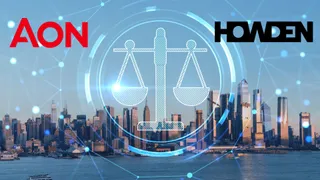
Capacity up, prices down – risks remain across marine, energy and terrorism
Richard Miller, managing director, specialty reinsurance at Howden Re, says capacity is abundant, pricing is under pressure but structural shifts in coverage and risk are defining the next phase.
The marine, energy and terrorism (MET) reinsurance market approaches the final quarter of 2025 in a complex position. Direct market pricing continues to soften across hull, cargo and energy, while reinsurance renewals have followed a similar trajectory.
Key points:
Clients seek broader MET protection
2026 soft, structure shifts matter
Talent pinch; selective hiring
“At 1/1/25, reinsurance rates were down 7.5% on average, with some risk-adjusted reductions approaching 20%,” Miller noted. “By 1/4, conditions had softened further, and that’s becoming increasingly common. The retro market has also slipped, with rates down 5-10%. Despite this however, buyers have been increasingly diversifying their products, with quota shares and ILWs reducing more traditional XOL orders. The limited recovery potential now expected from Dali has further underscored the need for a more valuable product.”
Competitive dynamics and new entrants
Reinsurers have enjoyed healthy returns from MET for a sustained period, drawing new entrants and fresh capital. The new entrants over the past 12 months have added to a market now approaching $1 billion in maximum line capacity, a significant increase over recent years. Further entrants are expected in 2026.
“Capacity expansion is keeping pressure on rates,” Miller explained. “But the real differentiator now isn’t balance sheet size. It’s execution, technical edge and creativity. Legacy relationships alone aren’t enough. New providers are looking for growth and relevance,” he said. “That gives us scope to innovate collaboratively with clients.”
Risk and event landscape
Losses from the Russia-Ukraine conflict continue to be closely monitored. Miller expects these to have limited impact on broader MET reinsurance pricing. “There will be issues for certain retro players once coverage determinations are made, but excess supply of reinsurance capacity means loss-impacted markets will struggle to push through increases. However, ultimately, loss-impacted programmes will be relatively few.”
Coverage is evolving. Broader Russia-Ukraine-Belarus (RUB) war coverage is reappearing in programmes, escalation clauses linked to MENA conflicts have been removed and war, terrorism and political violence definitions are being broadened, both in terms of radius and number of cities included.
“These changes reflect reinsurers’ willingness to engage on coverage breadth,” Miller said. “Clients are pushing for broader MET protection and markets are now beginning to agree. We’ve seen that not only on terror-related exposures but also in areas like Gulf of Mexico energy cover.”
The missing model
Strike, riot, and civil commotion (SRCC) remains an area of weakness. The lack of a dedicated model has constrained the development of bespoke coverage. “The absence of SRCC modelling is one of the biggest blind spots in the market,” Miller argued. “It has held back innovation. At Howden Re, we are working on ways to address this in time for Q1 renewals.”
Broker positioning and talent
Against this backdrop, Howden Re is working with clients to deliver tailored solutions.
Talent is another pressure point. Dispersion across underwriting and broking has created shortages in both skill and execution quality. Miller sees Howden Re’s team as well positioned. “We will shortly be growing from 14 to 15 people, with additional actuarial resource coming on board, with a blend of experience across specialties and geographies. For our size, the depth of relationships we hold is a genuine advantage.”
He added that Howden Re’s strength lies in integration. “We’re working hand in hand with our colleagues in direct, consortiums, programmes, capital advisory and facultative teams. That cross-team collaboration ensures we can address the full suite of capital and coverage issues efficiently for clients.”
Outlook: shifting terrain
As 2026 approaches, pricing remains under pressure, but Miller warns the real story is in how the market evolves. “Soft conditions don’t negate the risks,” he said. “The structural changes under way, from SRCC to WTPV to retro alternatives, will define the next cycle. The winners will be those who anticipate complexity, not just those who compete on price.”
For clients, this means the months ahead are not simply about securing capacity, but about finding partners with the technical edge, creativity and collaborative mindset to navigate a market in transition. For Howden Re, the opportunity is clear: to help shape the next phase of the MET reinsurance market by combining global reach, specialised expertise and integrated solutions that respond to risk as it evolves.
Richard Miller is a managing director, specialty reinsurance at Howden Re. He can be contacted at: rich.miller@howdenre.com.
For more news from Monte Carlo Today, click here.
Did you get value from this story? Sign up to our free daily newsletters and get stories like this sent straight to your inbox.
Editor's picks
Editor's picks
More articles
Copyright © intelligentinsurer.com 2024 | Headless Content Management with Blaze

